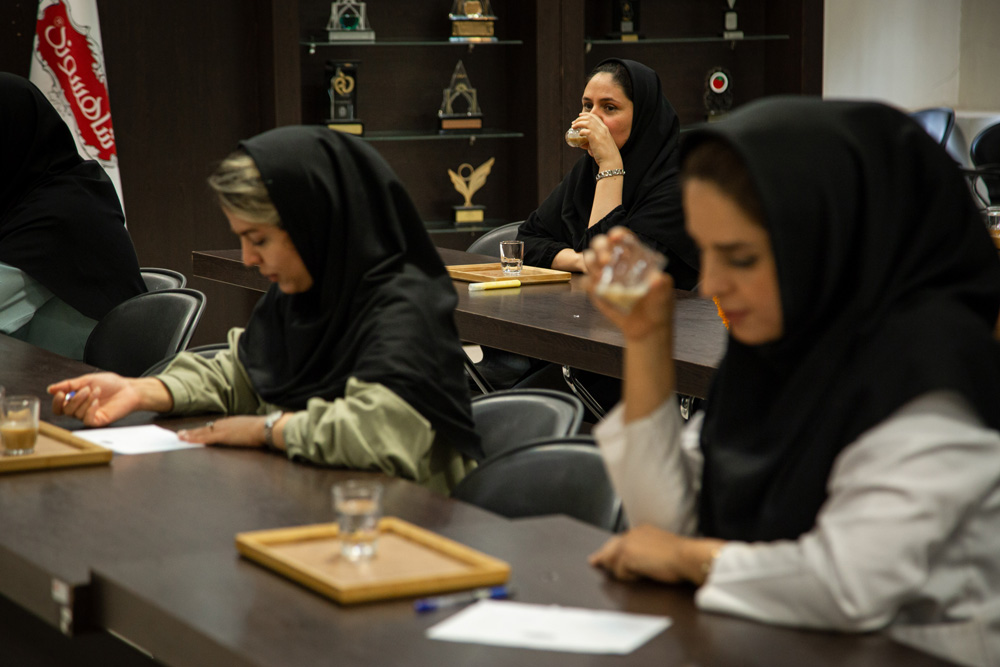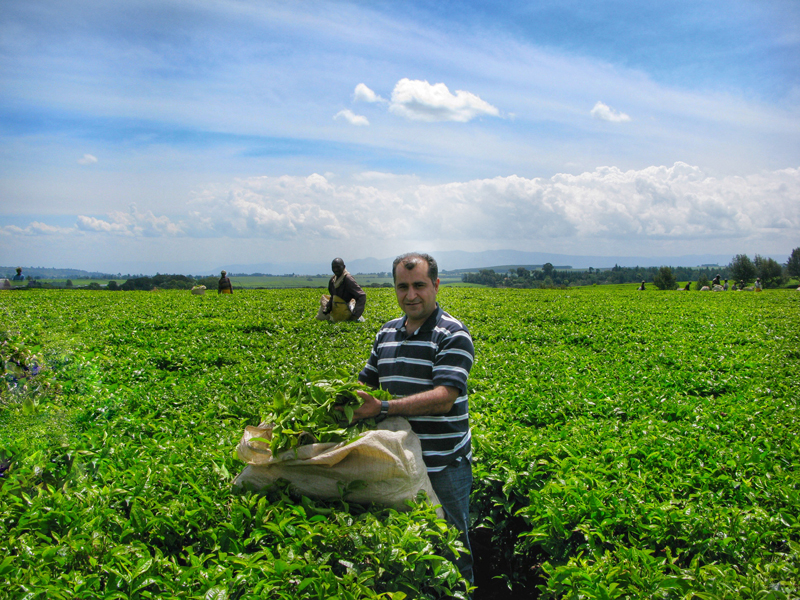
Tea Processing
Tea originated from a plant named Camellia Sinensis which is usable after processing. This process using the Orthodox (traditional) Method is briefly written below:

Plucking
Tea is plucked from young and terminal branches that consist of two or three young leaves and the terminal bud.
Tea is processed in two different ways: the Orthodox method and the C.T.C method. These two ways are different in the method of rolling the green tea leaves. In the C.T.C method, all of the cells and pigments in the tea leaf are oxidated so the tea has better color and quality than the traditional method.
Withering
The goal of withering is to decrease the water inside the tea leaf by 40 percent, decrease the chlorophyll, increase the activity of the Polyphenol Oxidase Enzyme, increase the caffeine, and transform the starch into sugar.
Rolling
In this step, the sap will come out of cells and the leaf is prepared for the fermentation process. The goal in rolling is to break leaf cells thoroughly or partly and mix the chemical ingredients and enzymes inside the leaf.
Fermentation
In this step which is one of the most important steps in the processing of tea Polyphenols are oxidated and important compounds such as Theaflavins with a red-orange color and Thearubigins with dark brown color.
In the process of fermentation of tannin, the green color and grass-like scent are diminished and the tea becomes light brown.
Drying
In this step, tea leaves are dried quickly in the heat and the water percentage in the leaf drops to 2-3%; the tea leaves are cooled shortly afterward.
Sorting & Grading
After the processing, the tea is sorted into different gradings: whole-leaf, broken-leaf, fanning, gunpowder tea, and dust.
All tea gradings consist of fermented (Black tea), non-fermented (Green tea), and half-fermented (Oolong and Pouching tea) that have different processing.
In the countries where the tea-drinking culture is affected by Britain; Abbreviations and Latin letters are used for sorting different types of tea; They call these signs grading or sorting and it indicates the quality of the tea.
The smaller and more broken the tea leaves are, the sooner it will be brewed and it is more favorable for drinking.
The “P” in tea sorting originated from the word Pekoe which is a Chinese word meaning “infant’s hair” and it refers to the terminal leaf bud in tea sorting.
The “O” originated from Orange; Orange-Nassau was the ruling family in the Netherlands so this word doesn’t refer to the color or taste of the tea.
C.T.C tea
Leaves of CTC tea have a ball-like shape and it is produced in three steps: cutting, tearing, and curling using a machine called Rotervan.
Tea quality
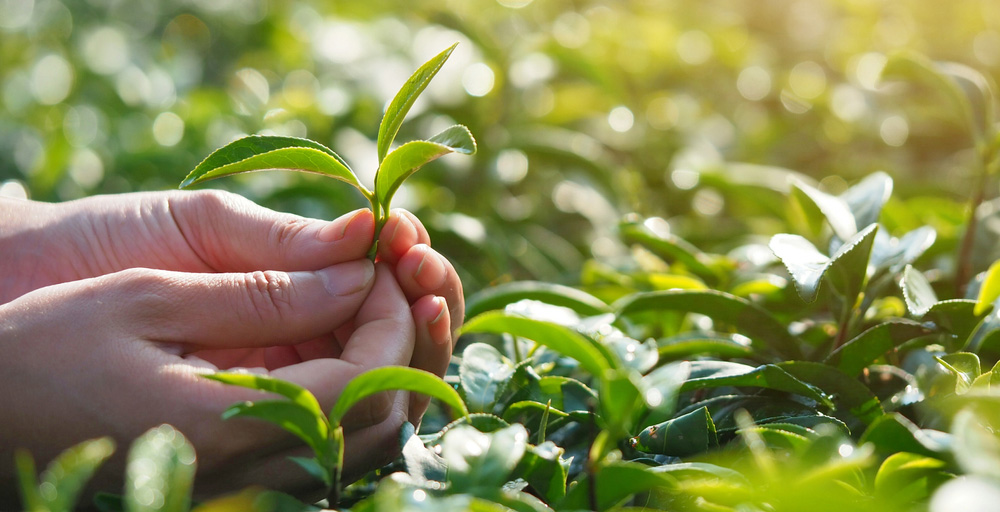
The quality of tea is mostly related to the quality of the leaf it originated from that in itself is related to the kind of plant, the condition of growing, and the type of leaf that was harvested (Its delicacy, freshness, etc.). You can still show the good qualities of this valuable plant by processing it carefully and correctly.
Types of Black Tea based on the country they are produced in
India is the biggest producer of tea, the most famous beverage on Earth. Tea is mostly produced in Assam, North Bengal, Darjeeling, and Nagaland. India has the most important tea brands.
Tea that is planted in the high grounds has more scent and less color; the more we come down to sea level, the more the color and the less the scent will be, thus Darjeeling tea has the most scent and Ceylon tea has the most color and least scent that is why essence-tea is categorized among Ceylon tea.

Ceylon tea
Ceylon is the previous name of Sri Lanka which is located in the south of the Indian Peninsula. It is characterized by strong color, mild scent, and deep taste. It is best drunk when it is brewed for 15 minutes.
Indian tea (Calcutta tea)
It is a region in the north of India and the capital of Bengal: it has a sour taste, brewing time: 15 minutes
Kenyan CTC Tea
Kenya is a country in East Africa that has the best CTC tea; This tea has a strong scent and sweet taste.
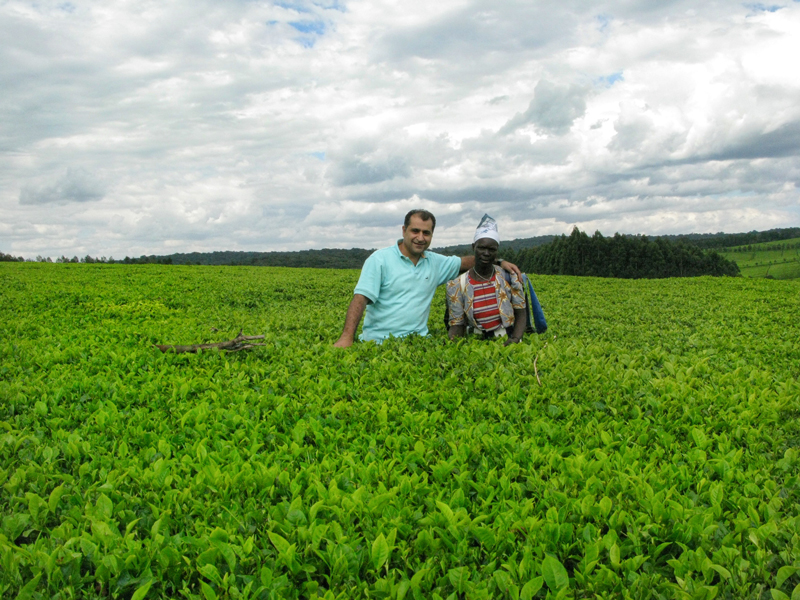
Indian CTC Tea
It has a mild scent and strong color.
Whole-Leaf tea
It consists of the biggest tea leaves. It is brewed slower, it has an amber color, and it has a more astringent taste than other types of tea.
Gunpowder Tea
It has the smallest tea leaves. It is brewed faster and it has a strong color.
Iranian tea
The combination of humidity and height in Northern Iran has made a suitable environment for growing tea. Iranian Tea is one of the healthiest teas in the world. On the other hand, the highland climate reduces the number of pests which decreases the need for pesticides.

The Art of Tasting Tea
Although the ability to taste tea is widely unknown to the public, it is a form of art like any other beverage-tasting and it is acquired by the taster through time. The taster unlike stereotypes is not usually an introverted person with a solemn interest in tea.
The skill of these tea experts is acquired through years of training. The taster slurps a lot of tea cups from light herbal tea to cups of high-quality tea to acquire this ability.
Tasting tea is mostly about talent and enthusiasm rather than a well-framed science. It is made by slurping continuously through the years and enables the taster to differentiate tiny details and characteristics between various types of teas.

Through time drinking tea evolved and reached its peak like any other consumer good. The need for a preestablished standard that could be maintained through the years was what created these types of experts “the tea-tasters”. This job required people who’d trained their sight, tasting, and smelling to their peak because a good sight and a precise sense of smell are needed to differentiate between different tastes and scents of teas.
Tools that are used by a tea taster:
- Tea tasting service: This service includes a bowl for tasting and a cup with a lead for brewing the tea.
- Scale: It is used for measuring a precise amount of tea for each cup which is usually 3g per cup.
- Tasting spoon: It is similar to a soup spoon but a bit deeper.
- Trash can: It is used to throw the tea away after tasting it.
- Timer: It is used for keeping track of time while brewing the tea.
However, a real tea taster can do his job using only 1-2 small teapots, a teacup, a spoon, and any kind of watch or clock.
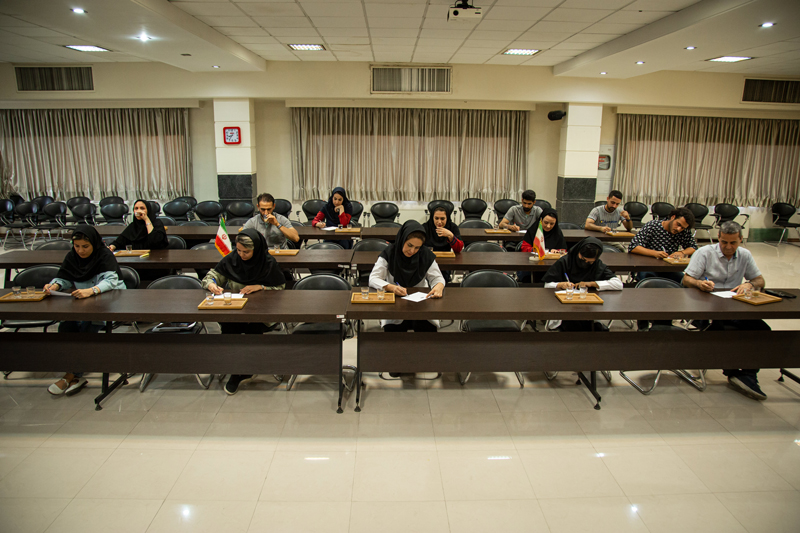
Tea Tasting, Shahsavand Expertise
The beginning of Shahsavand is deeply related to tea. The experience of Shahsavand family in professional activity related to tea for several decades resulted in a complete familiarity with this product. The founder of Shahsavand Corp., Mohammad Saeed Feysal has visited tea farms in Sri Lanka and India and chosen the best-quality tea plants based on a high standard for scent, taste, and color to provide a good combination to satisfy the high expectations of Iranians by a high-quality cup of tea. Saeed Feysal is one of the few Iranian tea tasters. Under his guidance and with the help of a team of experts, Shahsavand Corp. is monitoring the process of producing tea from farm to teacup.
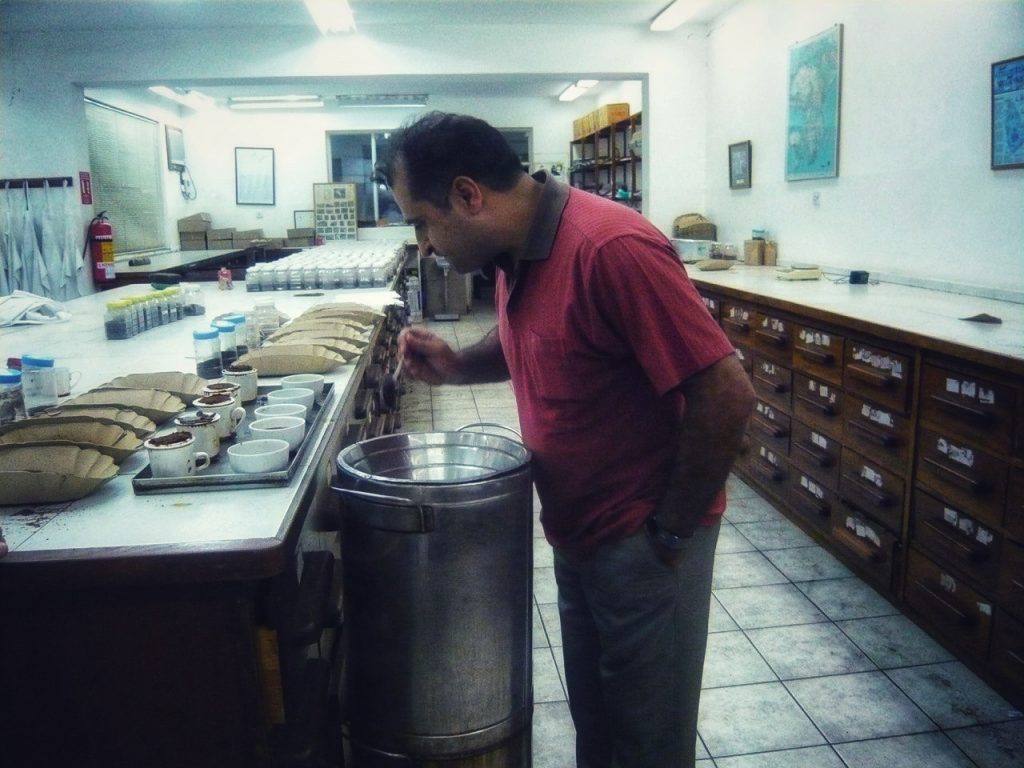
Shahsund; A sip of greetings

